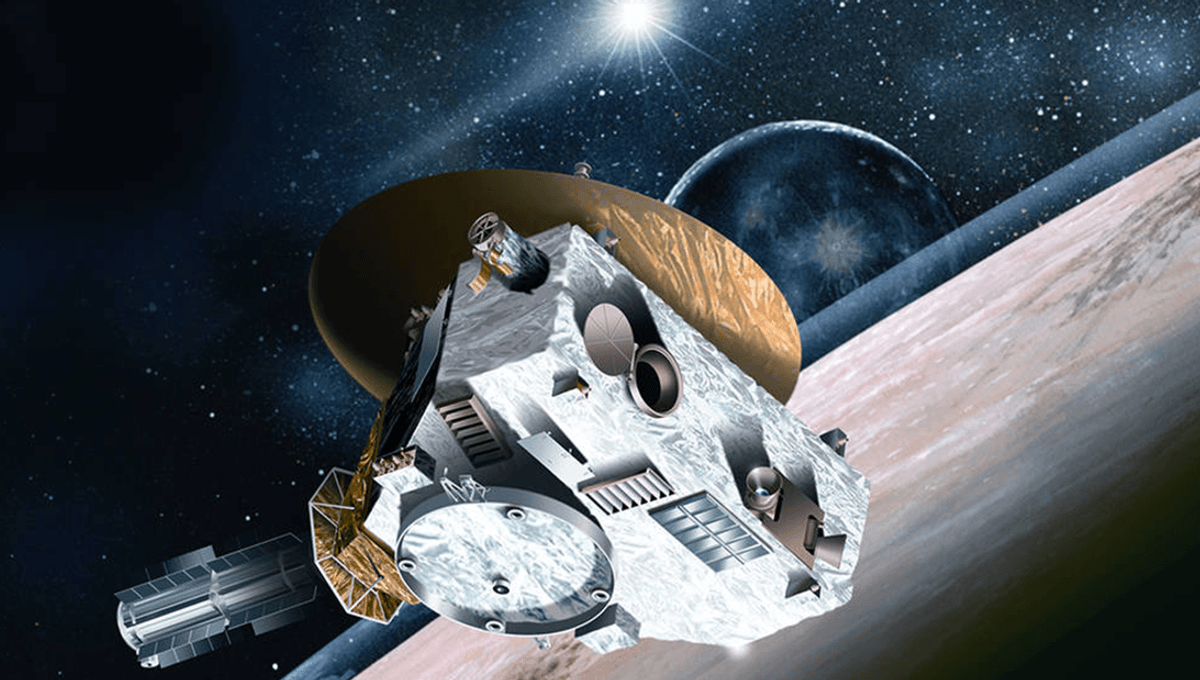
A NASA spacecraft far from Earth has made an unexpected discovery, after turning its instruments towards a dark patch of sky at the galactic poles for over 200 hours.
ADVERTISEMENT
Studying the background light that is illuminating its journey, the New Horizons team discovered it is much brighter than expected, and they don’t know why.
NASA launched New Horizons in January 2006 to study everyone’s favorite dwarf planet up close, before sending it on to get a remarkable view of asteroid Arrokoth.
“[New Horizons was] the first spacecraft to explore Pluto up close, flying by the dwarf planet and its moons in 2015,” NASA explains of their remarkable spacecraft. “After a nine-year journey, New Horizons also passed its second major science target, reaching the Kuiper Belt object Arrokoth in 2019, the most distant object ever explored up close.”
Having completed that task, New Horizons is still going strong, equipped with useful scientific instruments still collecting data. The spacecraft is now over 61 astronomical units (AU) from Earth, with one AU being the distance from Earth to the Sun, around twice what it was while visiting Pluto. At these distances, the spacecraft’s team realized that it could be used to take images of the cosmic ultraviolet background (CUVB) radiation, far from the glow of sunlight, gas, and dust of the inner Solar System. Studying background radiation, such as the cosmic microwave background (CMB), has helped place useful constraints on cosmological theories ranging from the expansion rate of the universe to galaxy evolution.
“Radiation in the FUV (Far Ultraviolet) band is important for studying a variety of astrophysical processes,” the team explains in a new paper, which has not yet been peer-reviewed. “Massive star formation and ionized gas in the Galactic ISM; heating of diffuse interstellar gas clouds by photoelectric emission from dust; controlling the interstellar atomic-to-molecular transition through photodissociation in the H2 Lyman and Werner bands; and the star-formation rate in galaxies over billions of years.”
The team attempted to get a good look at this background using New Horizon’s Alice instrument, or Ultraviolet Imaging Spectrometer. Measurements have been taken before of this background, but further out in the Solar System makes picking apart the data a little easier.
ADVERTISEMENT
In 2023, when New Horizons was around 57 AU from the Sun, the team took 200-hour-long exposures of the Milky Way’s galactic poles, away from the main source of light of our galaxy. The team was constrained by the direction that the probe was pointing in, so partly selected this region as it was in the spacecraft’s shadow.
Looking at the data, and correcting for signals from the spacecraft itself, the team discovered something unexpected. The seemingly dark patch of sky, used to gage a background level of ultraviolet light, is a lot brighter than expected in those frequencies. About twice as bright, in fact, than could be expected from sources (such as supergiant O and B type stars) that we know about.
“About half of the offset may be explained by known sources (the integrated light of unresolved galaxies, unresolved stars, emission from ionized gas, and two-photon emission from warm hydrogen in the halo),” the team explains, “with the source of the remaining emission as yet unidentified.”
That’s a pretty intriguing discovery. The galaxy, or the universe beyond it, appears to have more sources of high-energy ultraviolet light than we know about, and we really don’t know what the source could be. For now, it remains unknown what could be behind it. Soon, we will get more measurements of the ultraviolet background when NASA’s UVEX (UltraViolet EXplorer) is launched in 2030. Hopefully, then we may get more clues to this new and unexpected mystery.
ADVERTISEMENT
The study is available on the pre-print server arXiv.
Source Link: NASA Spacecraft Deep Into The Solar System Discovers New Unexpected Mystery